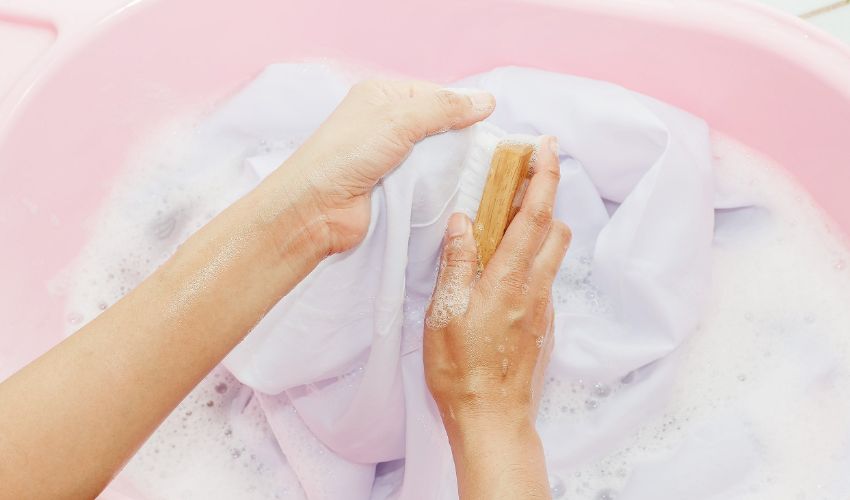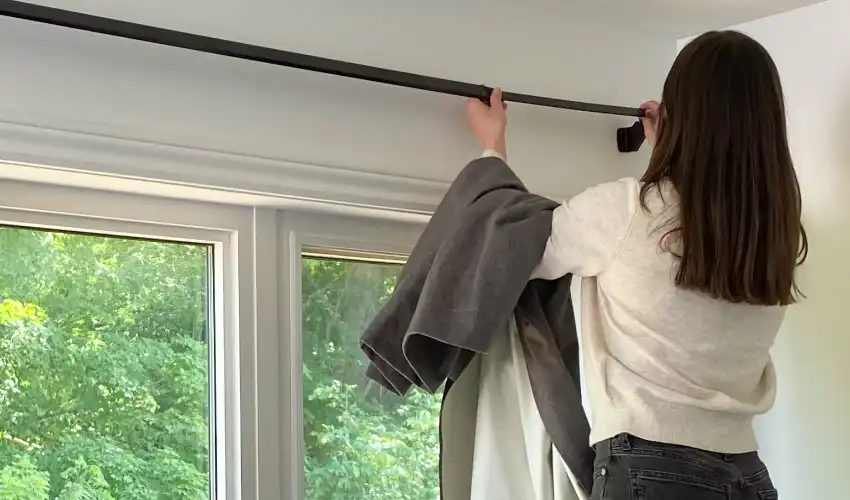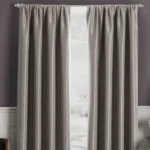Curtains not only enhance a room’s look but also provide insulation, privacy, and control over light. Regular Clean and maintain your Curtains are essential to guarantee their longevity and retain their attractiveness. With the help of this guide, you’ll be given a procedure for correctly cleaning and maintaining your curtains, allowing you to take advantage of their beauty and usefulness for many years to come.
Why Do We Need To Clean And Maintain Our Curtains?
-
Appearance And Aesthetics
The general aesthetic and look of a room are greatly influenced by curtains. They can look more attractive by being kept clean and well-maintained. You can maintain your curtains’ aesthetic value and original attractiveness by cleaning dust, dirt, and stains right away.
-
Durability
If curtains are not properly maintained, they can worsen over time just like any other fabric. The fabric can become accumulated with dust, grime, and debris, which could cause overall structural deterioration. Frequent cleaning lowers the likelihood of damage to the fabric fibers by preventing the accumulation of these particles. You can lengthen the life of your curtains and prevent the need for early replacement by keeping them clean.
-
Hygiene And Allergens
If the curtains are not cleaned frequently, they are more likely to harbor allergens, pollutants, and dust miles. These irritants can degrade the quality of indoor air and generate various allergies or respiratory problems. Cleaning properly helps remove these allergens and keeps your home healthy.
-
Sun Protection
Over time, curtains’ textiles might deteriorate and fade because of sunlight. Dusting and moving the curtains regularly can help spread the exposure to sunshine evenly. A protective window film and sheer or blackout curtains can also reduce the negative effects of UV radiation. Your curtains will maintain their color, texture, and structural integrity if you take enough steps to protect them from sun damage.
-
For Functionality
Curtains offer various practical functions like privacy protection, light control, and sound insulation. Yet, the buildup of dust and grime is likely to make them less functional. Routine cleaning ensures the curtains’ ability to function properly and permits simple opening and closing. Also, it helps in preserving the integrity of any linings or unique characteristics, ensuring that the curtains continue to efficiently fulfill their intended function.
Guidelines To Maintain And Clean Your Curtains For Durability
Amongst all factors that increase the longevity of your curtains, the most crucial is to clean and maintain them properly. The main considerations for caring for your curtains are:
1. Assessing The Curtains Fabric
It is important to identify the fabric type of your curtains before you wash them. The manufacturer’s instructions or the care label should be read to determine the best cleaning technique. This preliminary evaluation is crucial because different fabrics call for different techniques.
2. Regular Dusting And Vacuuming
Over time dust and filth build up on curtains, so routine dusting and vacuuming are necessary to keep them clean. Using a feather duster or a microfiber fabric, begin by dusting off any loose particles. Then, gently remove any remaining dust with the vacuum cleaner’s upholstery attachment, paying close attention to the fold and pleats.
3. Spot Cleaning
To keep stains and spills from setting into the fabric, treat them as soon as they take place. Gently dab and blot the stains using a clean, white cloth, or sponge and a mild detergent solution to clean it. Always try it on a small infected area rather than the entire part. Avoid rubbing too hard since it could harm the fabric. To get rid of any detergent residue, wipe the area with a clean, moist towel and let it dry.
4. Machine-Washable Curtains
Remove any hooks or hardware from machine-washable curtains before putting them in a pillowcase or mesh laundry bag to keep them safe throughout the washing process. Use a light detergent, choose a delicate cycle, and adhere to the care label’s directions. Save the bleach for specific situations. After washing them, hang the curtains to dry naturally or dry them on a low heat setting if recommended by the manufacturer.
5. Hand-Washing Delicate Curtains
To avoid damaging delicate textiles like silk or lace, it’s important to wash them by hands. Lukewarm water should be added to a washbasin or basin together with a little detergent. Carefully dip the curtains in the water and be specially careful about scrubbing stained areas. Rinse everything off well to get rid of any detergent residue. Avoid wringing the curtains, instead, gently push or squeezed them to remove excess water. The curtains should be hung up to dry naturally away from the sun.
6. Professional Cleaning
It is best to use expert cleaning services for curtains made of delicate or high-maintenance textiles. They are equipped to handle specialty curtain fabrics and have the know-how to do the cleaning safely and effectively. Contact a dependable curtain cleaner in your neighborhood and adhere to their directions for putting your curtains in the mail and mailing them for cleaning.
7. Ironing And Steaming
It can be required to steam or iron your curtains to maintain their appearance. To choose the right temperature setting for ironing, refer to the fabric care label’s directions. To prevent the iron from coming into direct touch with the fabric, iron the curtains from the back, using a pressing cloth if required. Or, you might use a garment steamer and steam the curtains vertically while holding it a few inches away from them.
8. Sun Damage Protection
Over time curtain’s textile may fade and degrade because of exposure to direct sunlight. Use sheer curtains or blackout curtains to block the sun’s harmful rays, or cover windows with a film to avoid fading. Moreover, to adequately disperse the exposure to sunlight, frequently rotate or adjust your drapes.
9. Regular Maintenance
Regular maintenance is necessary besides cleaning, in order to make the curtains last long. Regularly check the hooks, rings, or hardware to make sure they are strong and in good shape. Any worn-out or broken components must be repaired right away. To avoid unintentional damage, be cautious of pet claws or kids playing near their curtains.
10. Professional Alterations And Repair
It is preferable to seek the advice of a skilled seamstress or curtains expert if your curtain needs adjusting or fixing. They can assist with length, breadth, or header style alterations and hemming or repairing requirements. Your curtains’ usefulness and attractiveness can last longer if you invest in professional modifications and repairs.
Conclusion
Your curtains’ lifespan and attractiveness can be extended with the right cleaning and upkeep. To keep them tidy and odor-free, regular dusting, spot cleaning, and proper clean and maintain your curtains are essential. Also, protecting the curtains from sun damage is equally important. These simple actions will make sure that your curtains maintain their aesthetic appeal and usefulness so you can use them for many years to come.
























